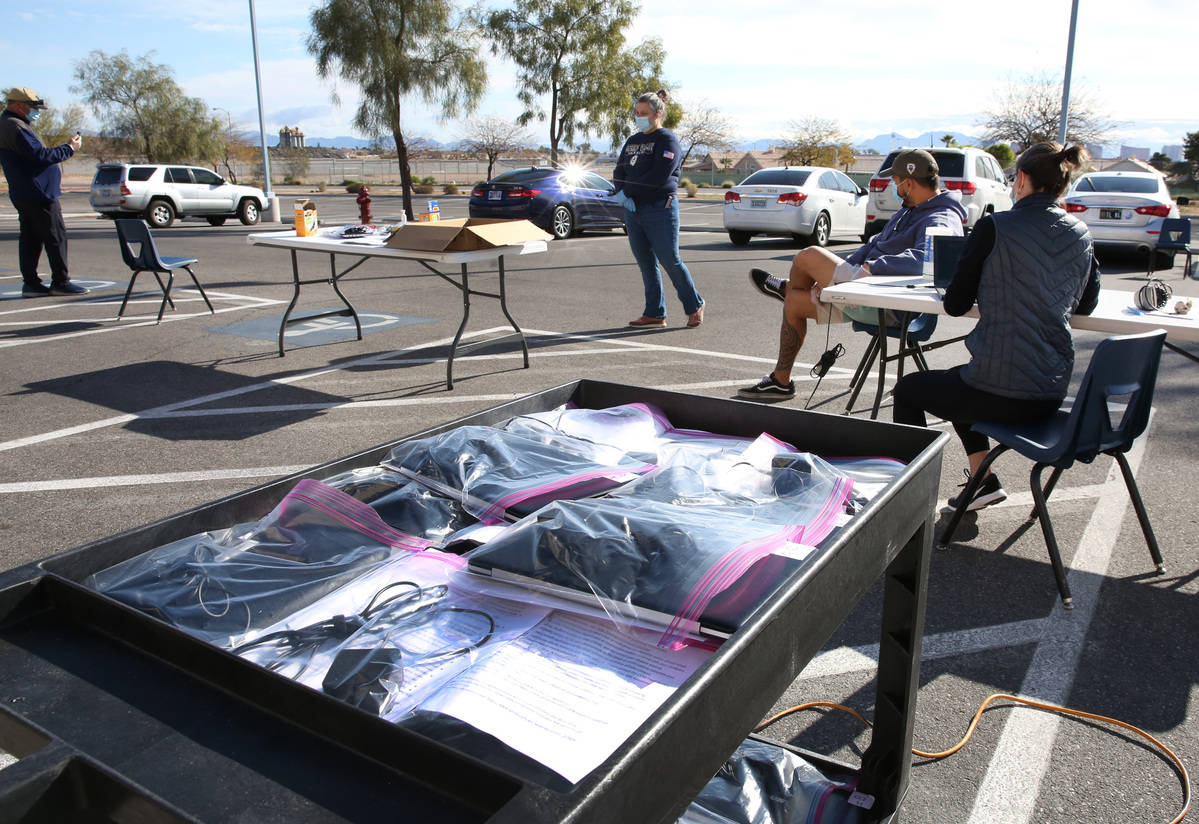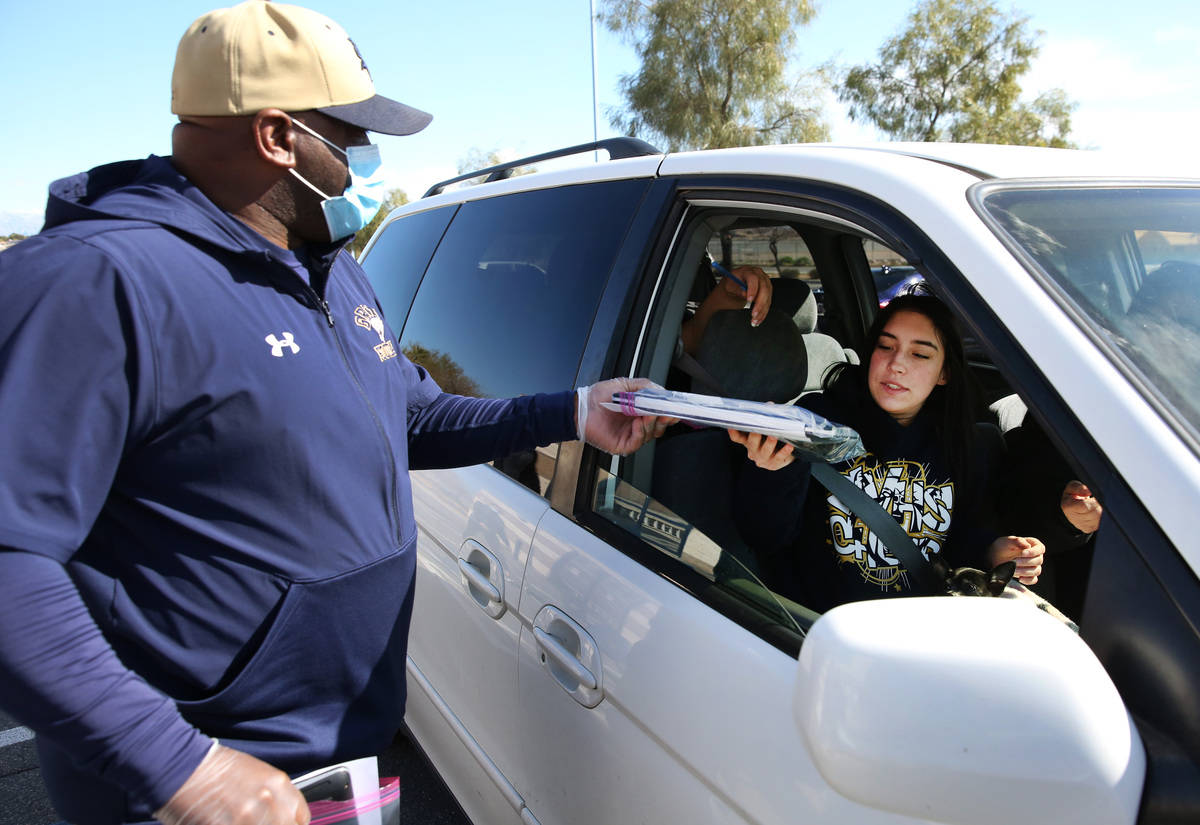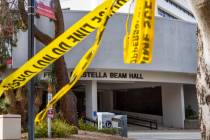Can CCSD pull off remote learning, avoid spring’s lost quarter?
With school districts around the country choosing to start this school year remotely due to the COVID-19 pandemic, the possibility of a full-time return to distance learning is looming over Clark County schools, too, bringing with it the specter of the lost spring quarter.
The Board of Trustees will meet on Tuesday to consider the schools’ reopening plan once again and whether students will start the year on Aug. 24 under a blended learning model or full-time distance education, which has proved to be unpopular with students and parents.
But while there are challenges to getting it right, education experts and advocates say distance learning doesn’t have to be like pulling teeth. Done well, online learning can provide more equitable access to specialty curriculum and more autonomy for all students, they say.
Not a repeat of spring
“Don’t confuse what we did in the spring as distance learning,” said Kim Loomis, a digital learning specialist and former head of the Clark County School District’s blended learning programs.
During the spring quarter, teachers weren’t allowed to introduce new material per a district directive, Loomis said, and mandated check-ins gauged only attendance.
A good online program includes a continuous curriculum, standards, benchmarks, varying assignments and regular exams, she said, and can be a boon to self-motivated students who can learn at their own pace. To build that intrinsic motivation in students who are struggling, Loomis suggests allowing schedule flexibility and choice, where possible.
“It’s totally doable, and it’s doable right,” Loomis said.
At board meetings, district staff and trustees have emphasized a similar point: With a new instructional platform known as Canvas, professional development for staff and plans to dramatically improve access to Chromebooks and Wi-Fi, this fall does not have to be a repeat of the spring, when educators reported frustrations with using unfamiliar software, and students experienced wildly varying levels of contact with their schools and teachers.
Distance learning this fall to some degree is guaranteed, as even the proposed rotating cohort model would put kids in class for two days a week and at home the other three. But some trustees have also publicly favored full-time distance learning, even just to start.
Already included in the reopening plan is a proposal to spend $28 million in federal relief funds to purchase additional Chromebooks. The district had distributed over 85,000 devices as of May 14, with 157,000 more awaiting deployment, but more are now needed for preschool students and in-classroom use, as well as spares, according to district Superintendent Jesus Jara.
The district also is planning to spend $27 million in bond funds on improving Wi-Fi access at schools, as well as $23 million in general funds to provide hot spots for in-home Wi-Fi access.
Beginning Aug. 10, teachers will spend the first 10 days of their school year in professional development, training in part on using Canvas as an online classroom management tool. And attendance requirements handed down by the Nevada Department of Education have changed somewhat as well, now asking teachers to contact students daily instead of weekly.
Chromebook supply
Of all the factors to consider, Chromebooks may prove to be a major stumbling block for the school district, as staff warn that supply chain issues could mean that the devices may not be in all students’ hands until the late fall.
Yvette Williams, chair of the Clark County Black Caucus, a community advocacy group, said that if the district adopts a remote learning model but can’t provide a Chromebook to all students who need one, it needs to delay the opening date.
Plowing ahead otherwise might be a civil rights issue just like denying a student access to a school building, she said.
“If you deliver education online, you have to provide the tools to access that classroom. Anything less than that, and you have closed the door on that child,” Williams said. “You are not offering free public education.”
Williams said she witnessed students struggle to get connected throughout the spring, with barriers to access affecting Black students most. She said she campaigned for the state and the school district to dedicate funds from the Governor’s Emergency Education Relief Fund to boost on-campus Wi-Fi in order to allow neighborhood students to connect.
Approximately 4,300 students could not be reached by teachers even once, according to district records, including over 2,000 Hispanic students and over 1,000 Black students. During some weeks, the district struggled to contact up to one-third of its students.
If the Clark County School District and other school districts do manage to roll out distance education equitably, Williams said, it has the potential to alleviate other barriers to education, like overcrowding in schools.
Online programs also could expand access to magnet and career technical education programs that are currently out of reach for students in some parts of the city who lack transportation.
“Here’s an opportunity to provide equal education,” Williams said. “For the first time, we could create a truly equal system.”
Teacher perspective
Both full-time distance learning and a blended learning model have benefits, said April Holloway, a Clark County School District teacher with a background in online curriculum. The former promotes safety, while the latter helps teachers check in with students and set expectations for the rest of the week.
“When we went into distance learning for emergency, it really was a different type of experience from what distance learning can and should be,” Holloway said. “If the remote learning is quality, it can be done well.”
Teachers who have had the most success with blended learning consider what needs to be taught in real time and what students can do on their own, Holloway said. Then, depending on the options available to them, they decide whether the best approach is an in-class lecture, a prerecorded video or a packet of materials.
For families, Holloway said, a routine is vital. Expectations should be clear about waking up, getting ready for school and meeting with the teacher at designated times. A device at home is also key, but there are ways to design curriculum to account for a lack of a computer or internet access, like giving students a chance to download materials, or sending them home with the student, she said.
Moving forward, Holloway said the district needs to work with the community as a whole to promote understanding of what distance learning is and how to help kids meet academic standards, while still offering support for those who need it.
“Which is what we’ve always tried to do,” she said.
Contact Aleksandra Appleton at 702-383-0218 or aappleton@reviewjournal.com. Follow @aleksappleton on Twitter.
RELATED
Las Vegas private schools planning to return to classroom





























